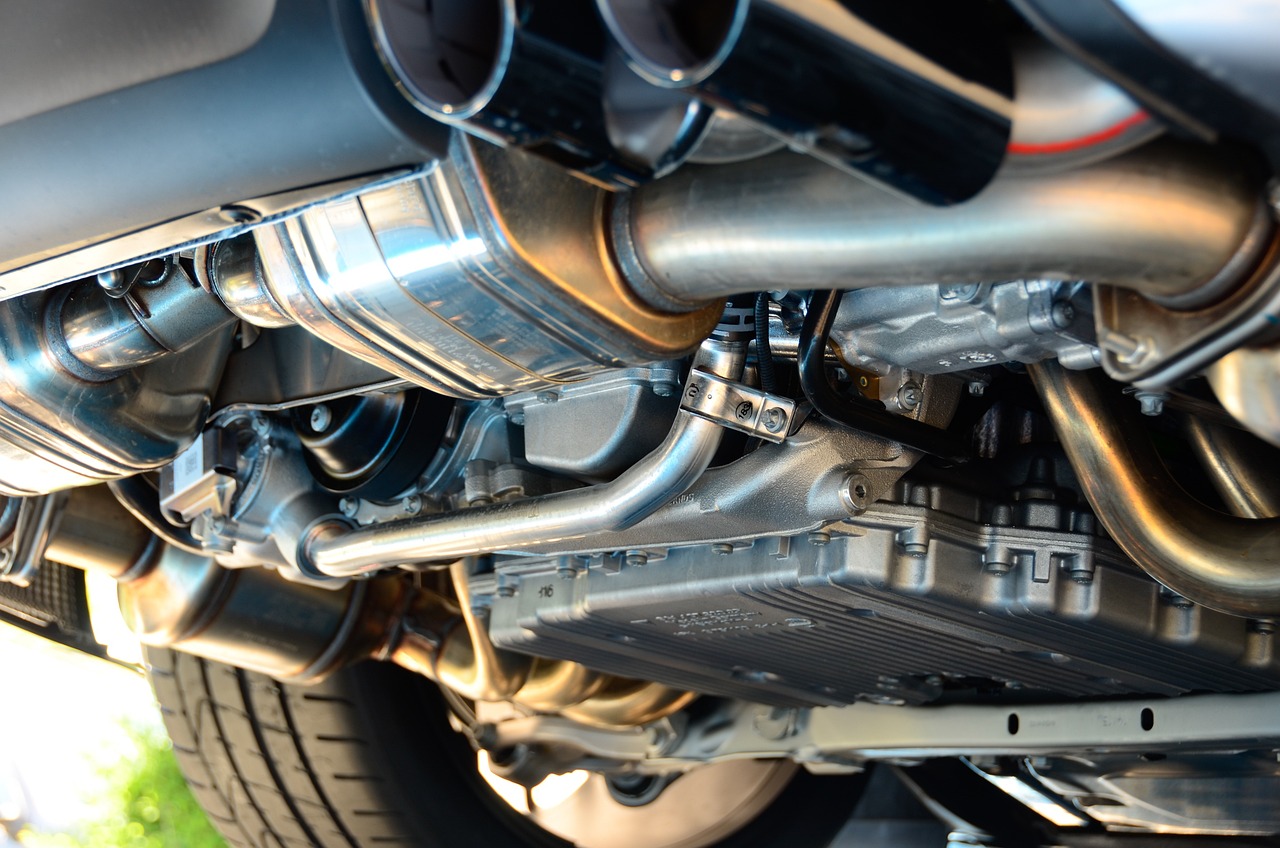Have you ever been behind another car on a cold day and noticed drops of water dripping from its tailpipe? Believe it or not, the water that you see is actually being formed through chemical reactions inside the car’s exhaust system.
The exhaust component responsible for this reaction is the catalytic converter. A catalytic converter is a crucial element within a car’s exhaust system because it dramatically reduces the amount of harmful pollutants emitted. This is not only important because it is a legal requirement in all 50 states, but it also helps improve air quality while reducing greenhouse gases.
In fact, many states require regular emissions testing, including Arizona. So, if your car has failed its emissions test or you suspect it might be time for a catalytic converter replacement, be sure to reach out to Performance Muffler to schedule your catalytic converter replacement.
In this article, we will discuss the chemical process through which catalytic converters combine toxic compounds into common, naturally occurring substances that are much less harmful for the environment.
How Does a Catalytic Converter Work?
Before we explain how a catalytic converter is able to turn poisons into innocuous compounds, it’s important to note that catalytic converters have limited lifespans and must be replaced every so often.
Catalytic Converter Components
Catalyst – The most important component in a catalytic converter is its catalyst, which is typically made of precious metals such as platinum, palladium, and rhodium. These metals act as chemical catalysts by adsorbing poisonous gases and accelerating their chemical reactions.
Substrate – The converter’s substrate is a honeycomb structure that is typically made from either ceramic or metal alloys. The structure is designed to maximize surface area, providing more space to apply a layer of the catalyst metals mentioned above. By optimizing the converter’s surface area, the catalysts are able to adsorb a larger percentage of the gases that pass through the converter.
Casing – The catalytic converter’s inner structure is housed within a metal casing that is attached to the car’s exhaust system. The converter’s casing will have an inlet and an outlet, allowing it to be incorporated in line with the exhaust pipe.
Catalytic Converter’s Chemical Process
The catalytic converter facilitates reactions among three key chemical groups in order to reduce harmful emissions.
Oxidation of Carbon Monoxide
Carbon monoxide (CO) is a poisonous gas produced during combustion within the engine. As it passes through the catalytic converter, it binds to the catalyst’s surface, where its chemical bonds are weakened. This lowers the activation energy required for a chemical reaction to occur.
As the carbon monoxide bonds to the catalyst’s surface, oxygen molecules (O₂) from the car’s exhaust gases also bind to the catalyst and split into single oxygen atoms. With both of these substances present on the catalyst’s surface, the individual oxygen atoms react with the weakened carbon monoxide molecules to create carbon dioxide (CO₂).
Reduction of Nitrogen Oxides
Nitrogen oxides (NO and NO₂) are significant contributors to the formation of smog and acid rain. However, when these pollutants pass through a catalytic converter and are adsorbed onto the catalyst’s surface, they are also able to react with other chemicals present to create innocuous and less harmful gases.
As nitric oxide (NO) and nitrogen dioxide (NO₂) are adsorbed onto the catalyst, their chemical bonds are weakened, allowing them to react with the carbon monoxide present. The oxygen atoms break free from the nitrogen and bond to the carbon monoxide molecules, creating CO₂ and leaving behind stable nitrogen gas (N₂).
Oxidation of Hydrocarbons
Hydrocarbons (HC) are compounds left over from the combustion process, and they are essentially made up of unburned fuel. These can include partially combusted gasoline or diesel, as well as other organic compounds.
Once inside the catalytic converter, the hydrocarbon molecules are adsorbed onto the catalyst’s surface, where they react with the oxygen (O₂) that is present. The weakened bonds between hydrogen and carbon allow the hydrocarbons to split and pair with oxygen molecules, creating water vapor (H₂O) and carbon dioxide (CO₂).
As you can see, the catalytic converter is able to effectively turn poisonous and dangerous gases into substances that are non-toxic to biological entities. Although there is growing concern regarding CO₂ emissions, carbon dioxide is still a much safer alternative to the closely related compound carbon monoxide.
Keep Your Car Green With a Catalytic Converter Replacement by Performance Muffler
A catalytic converter replacement by Performance Muffler will not only make your car more eco-friendly, but it can also help you stay in compliance with local laws and avoid expensive fines.
If you’ve recently failed an emissions test or you think your car’s exhaust system might be on its last leg, reach out to Performance Muffler for a professional catalytic converter replacement. Performance Muffler offers full-service exhaust repair and replacement solutions to car owners in Peoria and Phoenix, Arizona, as well as the surrounding areas.
Click here to get in touch with Performance Muffler today!

